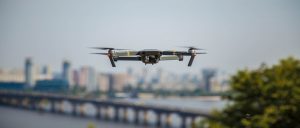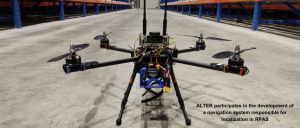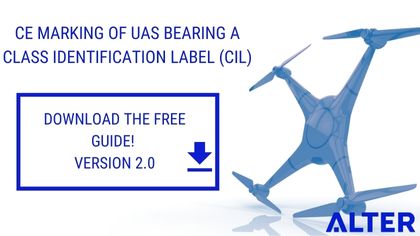Class Label
When it is time to fly a drone, the drone class must be taken into account? These classes represent the minimum characteristics that our drone should have. For this reason, EASA considered the inclusion of these labels as a good option to differentiate the essential drones’ capabilities.
These characteristics are mainly related to the maximum take-off mass (MTOW) of the drone, its maximum speed, or its maximum achievable height above the take-off point. In the following, we will present the main requirements that each RPA must meet to belong to one class. We will only mention the most important ones; if you want to consult the complete Regulation, you can see it by clicking here.
Product requirements for a Class C0
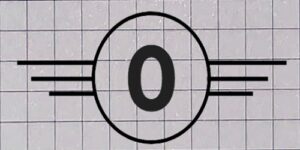
- “Maximun Take-Off Weight” (MTOW), including payload, of less than 250 g; Be safely controllable by a remote pilot following the manufacturer’s instructions;
- Have a maximum speed in level flight of 19 m/s;
- Have a maximum attainable height above the take-off point limited to 120 m or be equipped with a system that limits the height above the surface or above the take-off point to 120 m;
- If powered by electricity, the nominal voltage shall not exceed 24 V direct current (DC) or the equivalent alternating current (AC) voltage…
Product requirements for a Class C1
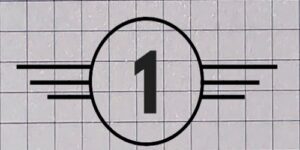
- Be made of materials and have performance and physical characteristics such as to ensure that in the event of an impact at terminal velocity with a human head, the energy transmitted to the human head is less than 80 J, or, as an alternative, the UAS shall have a “Maximum Take-Off Weight” (MTOM), including payload, of less than 900 g;
- Have a maximum speed in level flight of 19 m/s;
- have a maximum attainable height above the take-off point limited to 120m or be equipped with a system that limits the height above the surface or the take-off point to a value selectable by the remote pilot; in the latter case, clear information about the height of the UA above the surface or take-off point during flight shall be provided to the remote pilot;
- If powered by electricity, the nominal voltage shall not exceed 24 V direct current (DC) or the equivalent alternating current (AC) voltage…
Product requirements for a Class C2
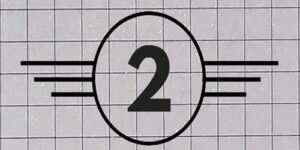
- Have an “Maximun Take-Off Weight” (MTOM), including payload, of less than 4 kg;
- Be designed and manufactured in such a way as to fly safely, and will be safely controllable by a pilot following the manufacturer’s instructions;
- Have a maximum attainable height above the take-off point limited to 120 m or be equipped with a system that limits the height above the surface or above the take-off point to a value selectable by the remote pilot; in the latter case, clear information about the height of the UA above the surface or take-off point during flight shall be provided to the remote pilot;
- If powered by electricity, the nominal voltage shall not exceed 48 V DC or the equivalent AC voltage; its accessible parts shall not exceed 48 V DC or the equivalent AC voltage; internal voltages shall not exceed 48 V DC or the equivalent AC voltage unless it is ensured that the voltage and current combination generated does not lead to any risk or harmful electric shock even when the UAS is damaged
Product requirements for a Class C3
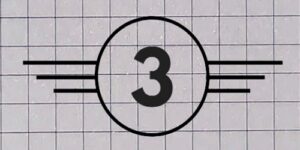
- Have a “Maximum Take-Off Weight” (MTOM), including payload, of less than 25 kg;
- Be designed and manufactured in such a way as to fly safely, and will be safely controllable by a pilot following the manufacturer’s instructions;
- Have a maximum attainable height above the take-off point limited to 120m or be equipped with a system that limits the height above the surface or the take-off point to a value selectable by the remote pilot; in the latter case, clear information about the height of the UA above the surface or take-off point during flight shall be provided to the remote pilot;
- If powered by electricity, the nominal voltage shall not exceed 48 V DC or the equivalent AC voltage; its accessible parts shall not exceed 48 V DC or the equivalent AC voltage; internal voltages shall not exceed 48 V DC or the equivalent AC voltage unless it is ensured that the voltage and current combination generated does not lead to any risk of harmful electric shock even when the UAS is damaged.
Product requirements for a Class C4
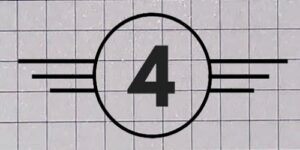
- Have a “Maximum Take-Off Weight” (MTOM), including payload, of less than 25 kg
- Be designed and manufactured in such a way as to fly safely, and will not be capable of automatic control modes;
- Be placed on the market with a user’s manual providing the characteristics of the UA (including but not limited to the mass of the UA and its “Maximum Take-Off Weight” (MTOM), including its payload, and a description of the behavior of the UA in case of a loss of data link), clear operational instructions and operational limitations (including but not limited to meteorological conditions and day/night operations) as well as an appropriate description of all the risks related to UAS operations
Together with the CE marking, these labels are the way to verify and validate the safety capabilities of a drone to comply with the essential requirement promoted by the European Commission.
In conclusion, it can be said that thanks to this new system of class labels, a high level of standardization are achieved when designing, manufacturing, marketing, and using drones as a product, whether for a commercial or recreational purpose. In addition, it is a guarantee of safety since to obtain these class labels; quality controls must be passed that verify and guarantee quality.

